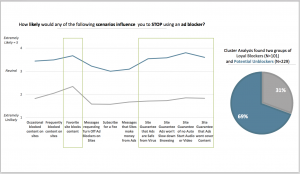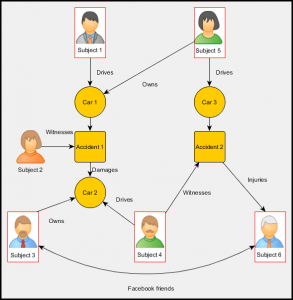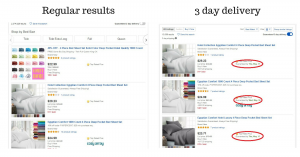
No marketer likes a lead generation website to pick up no leads at all. Right behind that, however, is another big problem at the other end of the spectrum — a website that produces oceans of lousy leads that waste your time. Some would say this is even worse.
Lousy leads fall into a number of categories:
- Leads that are too small
- Leads that are too big
- Leads in the wrong geography
- Leads for products/services the company doesn’t sell
- Leads where the prospect’s budget is inadequate or nonexistent
The Damage Done By Lousy Leads
Companies run into all sorts of difficulties when they pass along lousy leads to the sales team. Some of these difficulties are painfully obvious to sales personnel, but go unnoticed or underappreciated by company leadership and the marketing department. Let’s peruse an overview of the problems:
- Lousy leads force sales personnel to waste valuable time chasing dead ends, time that could be spent on quality leads that produce revenue.
- Lousy leads shake the confidence of the sales department in the value of marketing. This negative attitude makes day-to-day working relationships more difficult and leads sales personnel to work halfheartedly on even good website sales leads.
- Poor or nonexistent follow-up on lousy leads makes a bad impression. Even if the inquiry is not a good fit, the inquirer may still speak negatively about the company on social media or elsewhere. Over time, a multitude of negative experiences can create a bad brand image that interferes with closing high-quality leads.
- Another problem with leaving a bad impression: Just because a given inquiry is lousy doesn’t mean the inquirer might be a good present or future prospect. Companies squander opportunities when they fail to explore other possibilities on an inquiry that seems off the mark.
- If communication between sales and marketing is poor or nonexistent, the marketing department could be lulled into a sense of false security. Sales may not want to speak up, so marketing believes its internet marketing activities are working well.In this situation, marketing will fail to make improvements to its marketing campaigns, which locks in a marketing effort that oozes mediocrity.
How To Cut Down On Lousy Leads

Let’s be clear: completely eliminating lousy website leads is a pipe dream. Sales and marketing personnel must accept the fact that a certain number of bad website leads are going to come in via phone or form submission. However, taking the following steps will cut down on the volume of bad leads and minimize the damage caused by all of the problems mentioned earlier. Here is what to do:
- Make it crystal clear on your website’s homepage, contact page, “about” page(s) and product/service pages which niche you serve. Do you focus on middle market manufacturers? High net worth investors? Borrowers with poor credit? Hit website visitors over the head with this information. First, it will help them identify whether they have landed on the right website for their demographic. Second, it will personalize your website content, making it more persuasive.
- Make it crystal clear what geographic markets you serve. Are you local, national or global? If applicable, list your office locations in the footer of every page template; this not only helps website visitors identify whether they are in your market, but also, if done properly, enhances local SEO.
- Don’t get carried away with your sales pitch on the home page and product/service pages. Some companies beg for bad leads by claiming to be all things to all people, with statements like, “No matter how big or small your needs, we can save you tons of money.” Well, let me throw another quote at you: “As ye sow, so shall ye reap.” Incidentally, inflated claims in website copy turn off good prospects as well as turn on bad ones. Today’s consumer and business website visitors are savvy; they know an overbloated pitch when they read one — and grow skeptical.
- Use drop-down menus on inquiry forms to guide prospects in submitting informative, accurate and qualified inquiries — as well as filtering out bad ones. In addition, drop-down options alert visitors about to make an inquiry that doesn’t fit of possibilities to serve needs that do fit. Here are a few examples of drop-down techniques:
Add a field for “Annual Budget.” Perhaps you have three options: “$ 1,000 – $ 4,999,” “$ 5,000 – $ 9,999,” and “$ 10,000 – $ 25,000.” Now visitors can see immediately whether you are able to handle a $ 500 or $ 50,000 project.
Add a field for “Decision-Making Process,” with options such as “I make the decision,” “I’m a member of the search team,” and “I am doing preliminary research.”
Add a field for “Timeline,” with options like “Immediate,” “30 Days,” and “60+ Days.”
Add a field for “Key Decision Drivers,” with options like “Cost Reduction,” “Improved Throughput,” and “Better environmental impact.”
Remember, though, burdening the inquirer with too many fields can cause people to abandon the inquiry. There is always a need to balance getting helpful information with getting people to submit the form. The best way to master this balancing act…
- Test inquiry forms systematically. Once you’ve established a baseline conversion percentage, the marketing department can test and track what happens by adding and subtracting fields, along with changes to other design and content elements on the submission form. In this way, the effectiveness of these forms can be steadily improved. It’s very important, however, to apply a qualitative filter as well as a quantitative one — more leads are terrific unless all the new leads are lousy. To qualitatively evaluate leads, the marketing department must…
- Implement a system of lead validation. Lead validation (see infographic) is the process of separating sales leads from non-lead inquiries, and prioritizing high-quality sales leads. Most companies completely fail to do this and it is a major mistake. In addition to slipping the lousy leads into the hands of sales, failure to validate leads creates an even bigger burden on sales. No salesperson wants to handle spam, customer service inquiries, sales solicitations and unscrupulous inquiries from competitors. Lead validation involves listening to phone inquiries and reading all form submissions, ideally in real time. With validation, the best leads can be spotted immediately and given to the right sales personnel for follow-up. Lightning-quick follow-up creates the uber-positive brand impression every company needs to make on a good prospect.
- Add or enhance website case studies, so prospects again can identify whether they fit with your business. A good case study describes the customer, then outlines his/her/the organization’s problem and how your product/service solved it. When a website visitor reads a case study, the reaction you’re looking for is, “That sounds just like me!” Obviously, if visitors see that the case studies are very much unlike them, they will be less inclined to inquire. For case studies to be effective, they must be reasonably brief, easily scannable, and clear in their explanation of the customer, problem, and solution. In addition, case studies should be made a high-level navigation item, since they are powerful conversion drivers and need to be seen by visitors wherever they are on the website.
- Add appropriate credibility elements to your website. Consider this scenario: A company with 90 percent of its business with middle-market companies landed a Fortune 100 customer because of a fluky fit. Proud of the accomplishment, the company plasters references to and the logo of this customer all over its website. Naturally, the website attracts nothing but leads from other Fortune 100 businesses with which the company has almost no chance of closing. Credibility elements (company logos, customer testimonials, etc.) should not serve the corporate ego. Instead, they should be carefully deployed to attract the right kind of inquiries. Not that the company in this scenario should avoid all reference to its big client; however, the company should balance this credibility element with others more descriptive of its core business.
- Cover niche products and services with dedicated website pages. Many businesses have products/services with broad appeal and some with niche appeal. Broad-appeal product/service pages inevitably attract a broad range of inquiries — some that fit and many that don’t fit. By creating product/service pages dedicated to particular niches, you will attract the attention of specific types of visitors whose needs match very closely to the product/service being offered. For instance, if a company sells packaging boxes, a general “Packaging Boxes” web page is liable to attract everything from a college student looking for boxes to move out of a dorm to Fortune 100 companies looking for a million-dollar contract. Zero in on relevant prospects with subpages such as:
- Eco-friendly shipping boxes
- Reusable shipping boxes
- Heavy-duty shipping boxes
- Shipping boxes for large items
- Moving boxes
- Eco-friendly shipping boxes
If these niche product/service pages are built with SEO and/or PPC keyword research, they may attract a high volume of new website traffic from Google and other search engines — traffic that is highly qualified and likely to produce very high-quality leads. Note, too, this strategy can be scaled over time to incorporate as many niches as your company can serve. All of this additional content added to the website systematically over time sends Google positive signals and lifts the organic search engine visibility of all of your Web pages.
- Take steps to eliminate spam inquiries. While this article is not specifically dealing with spam, it’s worth mentioning. A poorly implemented website attracts a lot of it, and this volume of non-leads can burden an organization to the point where it is unable to efficiently process its good leads. Two things, in particular, to do are:
Never display email addresses as text on your website. Besides the fact email addresses attract spam, they are not helpful for tracking leads. For tracking and processing purposes, it is much better to drive all inquiries through web forms and phone.
Add CAPTCHA to forms to prevent submissions from bots. CAPTCHA is sometimes used reluctantly because it can detract from accessibility and user experience. Nevertheless, most people understand the need for it — as long as conversions are being tracked and evaluated, any decline in form submissions can be identified quickly and fixed.
Track, Track, Track

The importance of lead tracking has been emphasized several times — it cannot be understated. A final aspect of tracking very important in reducing lousy leads: Tracking enables marketers to identify sources of predominantly bad sales leads. Often, companies will run various Internet marketing campaigns concurrently; it is not unusual for one campaign to generate great leads, and another to generate poor ones.
Unless the marketing department has set up granular form and phone tracking, it will be unable to determine which campaigns are producing the lion’s share of those lousy leads. Form leads can be tracked through Google Analytics, but phone tracking is beyond its capabilities and must be set up using a different system. Tracking phone leads is well worth the effort, though; many times the best leads of all are phoned in, as callers generally have a more urgent need or a more complex one.
Set up a reasonable timetable to brainstorm and implement approaches to these recommendations that make sense for your business. They are sure to set your website on a path to better leads. And, as I have mentioned in passing, many of these techniques have the terrific side benefit of enhancing SEO and opening pathways to new, very well-qualified website traffic — and ultimately, new sources of great leads.
A final recommendation: When you begin efforts to enhance website lead quality, be sure the team includes marketing and sales personnel. Not only that, consider adding a customer or two and a prospect or two — the more real-world input you have, the more persuasive and on the mark your new website content and website experience will be. Like anything else, business decisions made in a vacuum usually suck.
Digital & Social Articles on Business 2 Community
(71)









